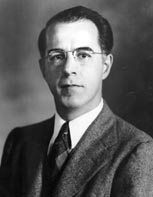 |
 |
|
 |
 |
 |
 |
 |
|
 |
 |
 |
 |

The Arthur K. Parpart Lectureship
7/14/08 - 4:00 PM - Lillie Auditorium
"Skin Stem Cells: At the Interface Between Biology and Medicine"
Elaine Fuchs, Rockefeller University, HHMI Investigator
Elaine Fuchs received her B.S. in chemistry from the University of Illinois at Urbana-Champaign in 1972 and her Ph.D. in biochemistry in 1977 from Princeton University. She was a postdoc at the Massachusetts Institute of Technology from 1977 to 1980. Dr. Fuchs was the Amgen Professor of Basic Sciences at the University of Chicago before coming to Rockefeller University in 2002. She was named the Rebecca C. Lancefield Professor the same year. She has been a Howard Hughes Medical Institute investigator since 1988.
Skin is one of the body’s major reservoirs of stem cells, as the epidermis must constantly self-renew to repair damage caused by mechanical stress and injuries. Dr. Fuchs is interested in how, at a molecular level, stem cells located within the skin are able to continually produce epidermis and hair follicles throughout life, and how they can transiently respond to external cues to repair wounds. Using a reverse genetic approach, in combination with cell, molecular, and developmental biology, Dr. Fuchs has uncovered the basic mechanisms controlling skin biology and also elucidated the genetic basis of a variety of human and mouse disorders, ranging from blistering skin disorders and tumors to a rare form of muscle degeneration and a sensory neurological disorder. Her lab also explores how adult skin cells deal with a constantly changing environment, and how stem cells determine when to divide and what type of cell to develop into.
Dr. Fuchs has received a number of honors and awards, including the Bering Award and the Federation of American Societies for Experimental Biology Award for Scientific Excellence in 2006, the Dickson Prize in Medicine in 2004, the Novartis Drew Award in Biomedical Research in 2003, the Cartwright Award from Columbia University in 2002, The Richard Lounsbery Award from the National Academy of Sciences in 2001, and the Women in Cell Biology Senior Women’s Career Achievement Award in 1997. She was elected to the American Philosophical Society in 2005 and to the National Academy of Sciences in 1995. In 1994, Dr. Fuchs was elected to the Institute of Medicine of the National Academy of Sciences and the American Academy of Arts and Sciences. She was named one of the Nation’s Outstanding Scientists by the White House in 1985. She has published over 250 articles and trained more than 100 students and postdocs.
 |
|
About the Arthur K. Parpart Lectureship
The Arthur K. Parpart Lectureship was established by Dr. Joseph F. Hoffman in memory of Dr. Parpart’s distinguished career as a devoted teacher and able investigator. Dr. Parpart’s interest in the natural sciences began during his early years as an undergraduate student at Amherst College. Although his research over the years encompassed a wide range of subjects, his main concern was the physiology of the red blood cell, in particular the physiological and biochemical architecture of its cell membrane.
In 1931, Dr. Parpart accepted a faculty position at Princeton University shortly after receiving his Ph.D. from the University of Pennsylvania. In 1948, he was elevated to chairman of Princeton's Department of Biology, a position he occupied until his sudden death in 1965. Each June, Dr. Parpart transported his laboratory to Woods Hole where he spent summers doing research at the Marine Biological Laboratory. For more than ten years, he was a faculty member of the MBL's Physiology Course; in 1963, was elected President of the Laboratory.
Widely known for his work in physiology and biochemistry, Dr. Parpart made a vital contribution to medical science during WWII, by directing a top-priority research project, which succeeded in lengthening the time human blood can be stored from three days to a maximum of forty days.
The career of Arthur K. Parpart was a notable one in all respects. He was a productive scientist, a vigorous and preserving leader, and a man who engendered the respect and friendship of scores of students and colleagues.
|
| |
  |
|
 |
 |
|